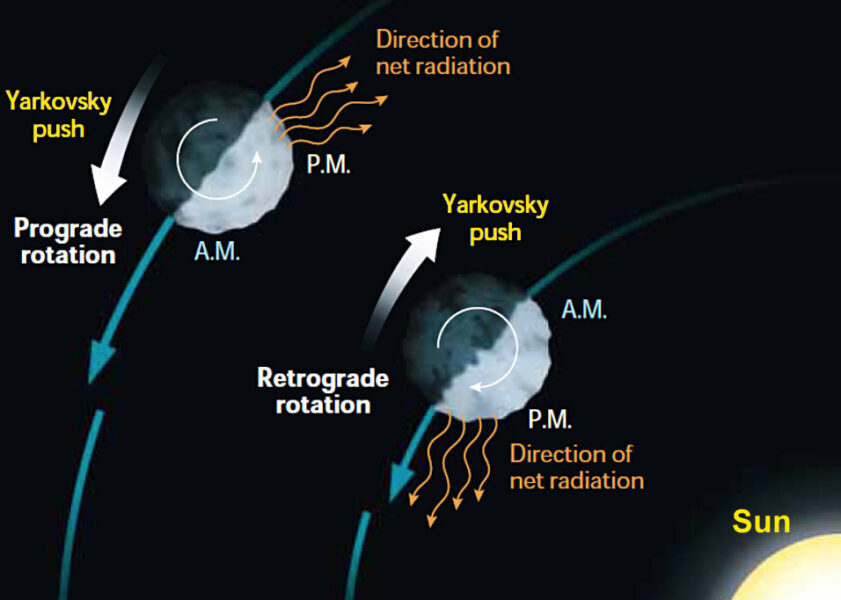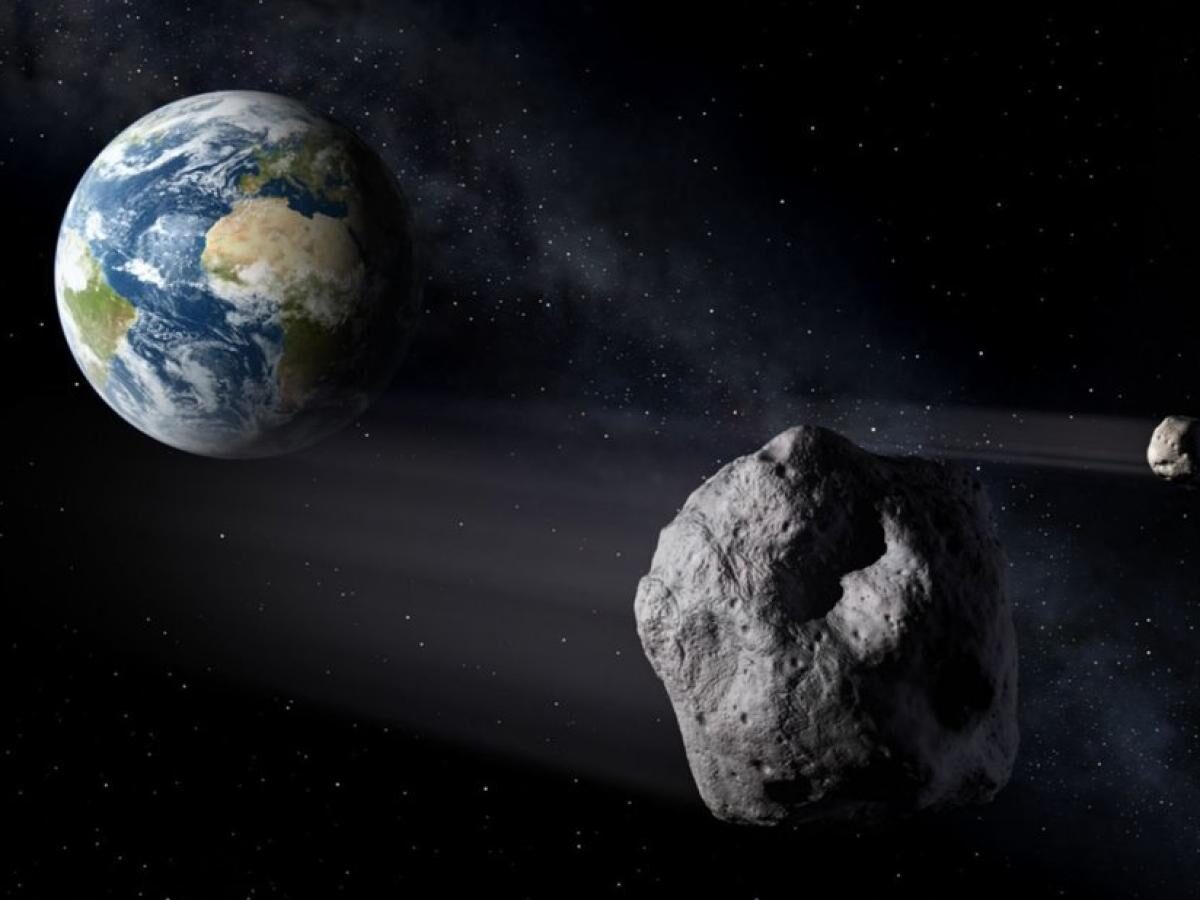When asteroids in the main belt of the solar system collide, the fragments come back together to form smaller rubble-pile bodies that orbit the Sun as a "family." Under the right conditions, some of those family members can end up in near-Earth space.
In a study published in Monthly Notices of the Royal Astronomical Society, researchers simulated the orbital evolution of asteroids in the Karma family, starting with the initial family-creating impact. The results suggest that over the family's lifetime, 350 members have transferred close to Earth's orbit — and around 10 might currently be in near-Earth space right now.
THE KARMA FAMILY
The Karma family is named after its largest member, asteroid 3811 Karma, discovered in 1953. The researchers estimate that approximately 137 million years ago, another object hit a body between 34 and 41 kilometers wide (21 to 25 miles), splintering off unknown numbers of family members. They're carbonaceous chondrites, so they reflect little light and are therefore difficult to find.
"However, new sky surveys within the last couple of years have been able to observe the tiny specks of light of these fainter asteroids, and these observations allowed us to identify 317 Karma family members," says undergraduate student and lead author Debora Pavela (University of Belgrade).
The researchers simulated the evolution of the members' orbits beginning with the family-making collision. In addition to the gravitational pull of the planets, the researchers also included the Yarkovsky effect, in which the tiny push resulting from solar heating can cause asteroids to drift across vast distances over millions of years.

The simulations show that over the family's lifetime, the Yarkovsky effect caused 350 large asteroids (more than 1 kilometer in diameter) to migrate to the so-called Kirkwood gap, an unstable region of the main belt around 2½ times farther out from the Sun than Earth's orbit. Here, the asteroids experience a 3:1 mean-motion resonance with Jupiter, completing three orbits for every one orbit of Jupiter. As Jupiter repeatedly tugs more strongly at certain relative positions, the asteroids' orbits gradually elongate. Eventually, the lost Karma members cross Mars's orbit to become near-Earth asteroids, Pavela says.
According to the simulations, the first asteroid entered the 3:1 resonance approximately 70 million years ago, and roughly 5 additional family members come in every million years or so.
Based on past studies that show most asteroids entering this resonance end up as near-Earth asteroids, remaining in near-Earth space for about 2 million years, coauthor Bojan Novakovic (University of Belgrade) estimates there are currently 10 asteroids from the Karma family in the near-Earth region.
"The Yarkovsky effect together with the resonance is interesting, because you can potentially get a meteorite from any part of the asteroid belt," says Thomas Burbine (Mount Holyoke College), who was not involved in the study. "This potentially provides an opportunity to study samples from different parts of the belt to learn about the early solar system."
FUTURE STUDIES
Identifying asteroid families that are supplying asteroids to near-Earth space is the first step in linking meteorites found on Earth to asteroids in the main belt. Ultimately, studies like this one contribute to a better understanding of the early solar system.
"We could have near-Earth asteroids and maybe even meteorite samples here on Earth that are from the Karma family," says Burbine, "This family identification invites people to study these members and perhaps even collect spectral data in the future to try to match a meteorite sample."
While linking the composition of meteorites to asteroid families is difficult, future space missions could target families believed to supply near-Earth asteroids and even bring back samples.
"Our study is a small piece of the big puzzle of understanding the early solar system that researchers are eager to solve," says Novakovic.




RC